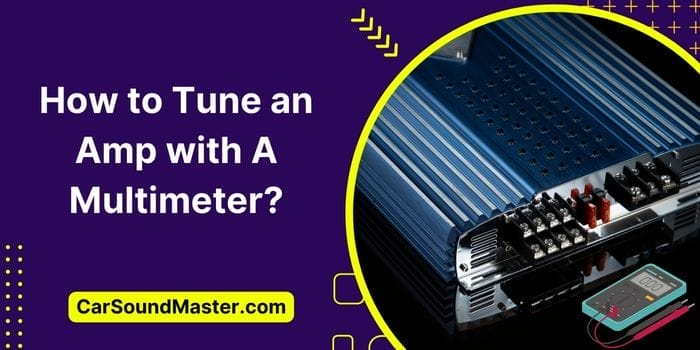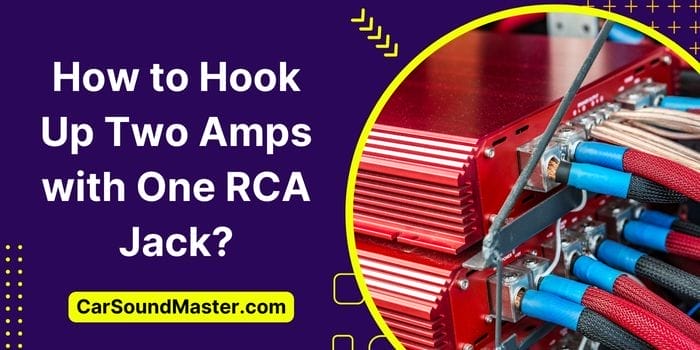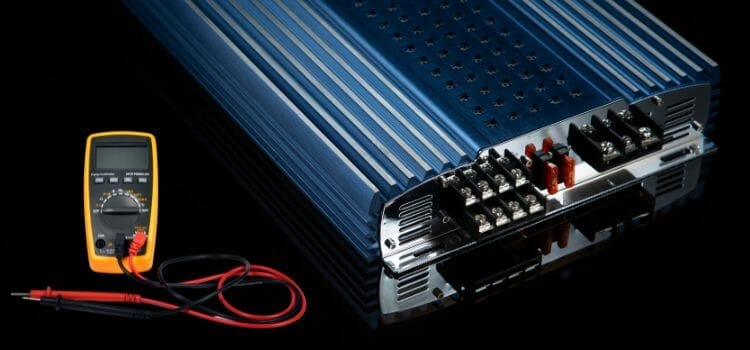Can One Amp Power Subs and Speakers? The Untold Fact
Every speaker in your sound system needs dedicated amplification to run at full tilt. However, this only means “one dedicated channel of amplification” and not in any way a full-fledged amp for each of your speakers.
With technology coming thick and fast, amplifiers built with multiple channels are also getting common these days.
For example, ranging from a solo pair of channels to amps with up to seven or more channels are also easily available in the market.
That said, of course, one amplifier with multiple channels can singlehandedly power all your speakers and subs. A 4-channel amp will be enough for a pair of speakers and a sub; a 5-channel amp for, maybe, two pairs of speakers and a sub; and so on.
Nonetheless, comprehending a few technical nuances may still be needed to make an informed decision. So let’s evaluate a few basics and see if one amp or two separate each for speakers and subs would make the best bet.
Can One Amp Power Subs and Speakers?
As already said, it’s not that you need an individual amp for each of your speakers; you only need one channel per speaker. So it’s all about matching the per-channel yield of your amplifier to your speakers’ (and subs’) RMS ratings.
You need to make sure that none of your speakers should be overpowered, and that your amp’s top RMS power should be equal to or a tad bit less than your speakers’ RMS rating. Besides, squaring off the impedance of all your components is also crucial to avoid any mishap.
In case, you want to wire multiple speakers and subs all with varying RMS to a single amp, make sure to match the amp’s RMS output to the speaker with the lowest power rating in the array. For impedance, it’s again the same i.e. match it for all of your components or at least never wire speakers with lower resistance to an amp that reads higher.
Hands-On Example
Let’s suppose you have a 5-channel amplifier which may read as follows:
150W x 4 + 400W x 1 @ 4 Ohms
300W x 4 + 650W x 1 @ 2 Ohms
So it literally means that there are 5 different amplifiers in the same enclosure off which 4 are capable of putting out 150 or 300 watts, whereas the last channel may easily yield up to 400 or 600 watts, both at 4 and 2 Ohms, respectively.
The four channels with lower RMS are for your mains while the single channel with higher output is usually dedicated to the subwoofer(s) (because it’s easier to produce all the other range of frequencies but the lows i.e. the bass).
As a general rule of thumb, an amplifier that provides around 75% of the speaker’s rated requirement is always the best bet. That being said, you could run a 100W amp into a 500W speaker as well but that would eventually result in more clipping esp. on higher volumes.
Some Viable Combinations
Considering the same 5-channel amp, suppose you have 4 speakers and a subwoofer rated at 300W and 500W at 4 Ohms, respectively. This will almost make like a match made in heaven with the amp.
But if your speakers and sub read the same RMS but at 2 Ohms, wiring them with our hypothetical amplifier will overburden them until you wire them in series. Whereas, for speakers and sub with the same RMS but at 8 Ohms, you’ll need to wire them in parallel to somehow draw the maximum power off the amp.
So the thing is, you should never feed your speakers more than what they can actually digest. You can somehow tweak and match the impedance by wiring components in series or parallel, but RMS always needs to be twice reinforced.
Advantages of Single Amp Setup
There are tons of advanced amps available in the market that include multiple speaker outputs and a dedicated channel for subwoofer with a basic inbuilt crossover as well. Setting up such solo amp for your sound setups may benefit you in ways like:
- Solo (multi-channel) amps for speakers and subs can save you a lot of space
- They result in a lot less and least-entangled wiring schema
- The inbuilt crossover may help you flee the complex crossover settings
- You won’t require any distribution block or such add-ons
- A single amp means a single mounting point – thus they are easier to install
Disadvantages
With pros, there are always cons to greet you as well. In this case, for example:
- Not, maybe, as much power as required being fed to each component
- No tailor-made crossover functioning
- Matching RMS and impedance may be difficult in the case of a multi-faceted speaker array
And, perhaps, some amps won’t allow the channel bridging, so that may make for another big downside.
Do I Need Two Amps for Speakers and Sub?
Although multi-channel amps have made things quite easier, separate amps for speakers and sub(s) are still a huge demand. This is particularly because, with individual amps dedicated to speakers and subs, you’ve got a more resolute control over your vast surround soundstage.
Two amps for speakers and subs means easy matching of tailor-made components, perfectly optimized frequency range response, pin-point fine-tuned sounds, and genuine lucidity overall.
Pros of Dual Amp Setup
There are countless advantages of setting up individual amps for speakers and subs in a sound system. For instance:
Optimally Engineered/Enough Power Supply
Speakers and subs handle an altogether different range of frequencies with the latter ones dealing in the most difficult range of notes; thus they also require more power to show up at full tilt.
Meanwhile, separate amps for both these components offer a perfectly optimized power supply. So there is lesser potential power-sharing compared to a solo amp setup, and all the speakers work out the max. possible performance.
Hi-Fi and More Accurate Sounds
Two amps separately dedicated to speakers and subs result in almost no interference between them and their handling of specified frequencies. It ultimately translates into superbly clean, precise, and easily readable sound notes from throughout the vast audible spectrum.
Finicky Customizations and Adjustments
With two amps for speakers and subs, you also have more control over the sound reproduction within the desired frequency range. Each amp comes with advanced and optimally fine-tuned crossover components, and you can easily achieve that personalized audio experience.
Cons of Dual Amp Setup
Some real-life bars of going with one such sound setup include:
- It’s going to be more space-consuming and, of course, a bit more time-consuming and complicated to set up
- Manual setting of crossover points, signal gain, and other integrations may require a tad bit more carefulness
- Dual amp setups are going to be pricey because of separate amps, drawn-out wiring schematics, and arranging for enough stout power source
Well, still somehow the pros of a two-amps setup outweigh its cons esp. if you are one really enthusiast music-mad person.
Conclusion
So what did you learn? Can one amp power subs and speakers? Or do you need two amps for speakers and sub?
Well, as a recap, the first option should be your way to go if you are quite tight on budget and space, and if you also don’t much bother with the sound quality and all that.
The second option is the best bet for a person who prefers perfectly poised sound imaging and easily readable notes from all over the audible frequency spectrum. A dual amp setup also leaves you with more options for customizations and tailor-made calibrations compared to a single multi-channel amp for both speakers and subs.
Rest, because music is highly influenced by personal preferences, it’s again solely up to you to decide which of the two setups suits you the best.






